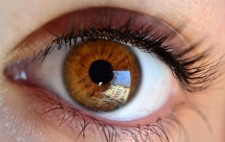 In the past decade, according to a study sponsored by Prevent Blindness America and the National Eye Institute, there has been a nearly 90 percent increase in the incidence of diabetic retinopathy an often progressive condition caused by tiny hemorrhages in the small arteries of the retina. In fact, diabetic retinopathy is the leading cause of blindness among adults in America.
In the past decade, according to a study sponsored by Prevent Blindness America and the National Eye Institute, there has been a nearly 90 percent increase in the incidence of diabetic retinopathy an often progressive condition caused by tiny hemorrhages in the small arteries of the retina. In fact, diabetic retinopathy is the leading cause of blindness among adults in America. In the past decade, according to a study sponsored by Prevent Blindness America and the National Eye Institute, there has been a nearly 90 percent increase in the incidence of diabetic retinopathy an often progressive condition caused by tiny hemorrhages in the small arteries of the retina. In fact, diabetic retinopathy is the leading cause of blindness among adults in America. But if detected early, it can be treated with laser photocoagulation, which can prevent visual impairment.
In the past decade, according to a study sponsored by Prevent Blindness America and the National Eye Institute, there has been a nearly 90 percent increase in the incidence of diabetic retinopathy an often progressive condition caused by tiny hemorrhages in the small arteries of the retina. In fact, diabetic retinopathy is the leading cause of blindness among adults in America. But if detected early, it can be treated with laser photocoagulation, which can prevent visual impairment.
Yet despite well-recognized national guidelines, fewer than 50 percent of diabetics in the U.S. undergo regular retinal screening. Lack of access to care, socioeconomic factors, and cultural barriers all contribute to these low detection rates, but a new study published in the Archives of Internal Medicine suggests these figures could vastly improve if patients could get screened in primary care settings, instead of having to go to an ophthalmologist.
The latest study, led by researchers from the University of North Carolina at Chapel Hill, screened just over 1,000 diabetes patients for retinopathy in a primary care setting. Each patient had pictures of both retinas taken, which were then sent through a secure web-based network to a retina specialist for evaluation. Within 48 hours, the primary care physician received the medical report and, if there were signs of problems, scheduled the patient for further photographs or sent them to a specialist for follow-up.
The use of this new telemedicine technology improved screening frequency from 32 percent to 71 percent in one year. While about 11 percent of patients were diagnosed with retinopathy, it is important to note that the incidence was much higher among black patients (71 percent), compared to white patients (27 percent). The reasons for this wide discrepancy are not clear, although factors including insurance, financial status, location, and genetics may all come into play. But the mere fact should alert caregivers to be especially alert to this treatable condition among their black diabetic patients.
Early detection of diabetic retinopathy is extremely important, since timely intervention with laser therapy can reduce the risk of severe vision loss by more than 90 percent. As the authors conclude, telemedicine screening at the point of primary care represents a potential paradigm shift in the management of diabetes.


